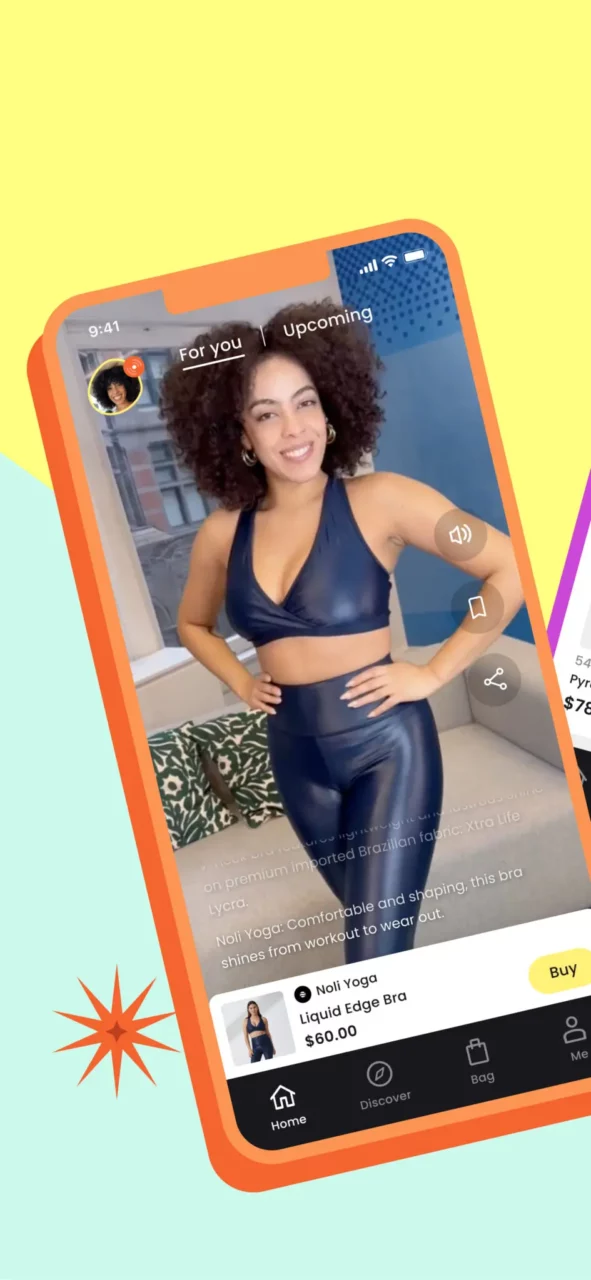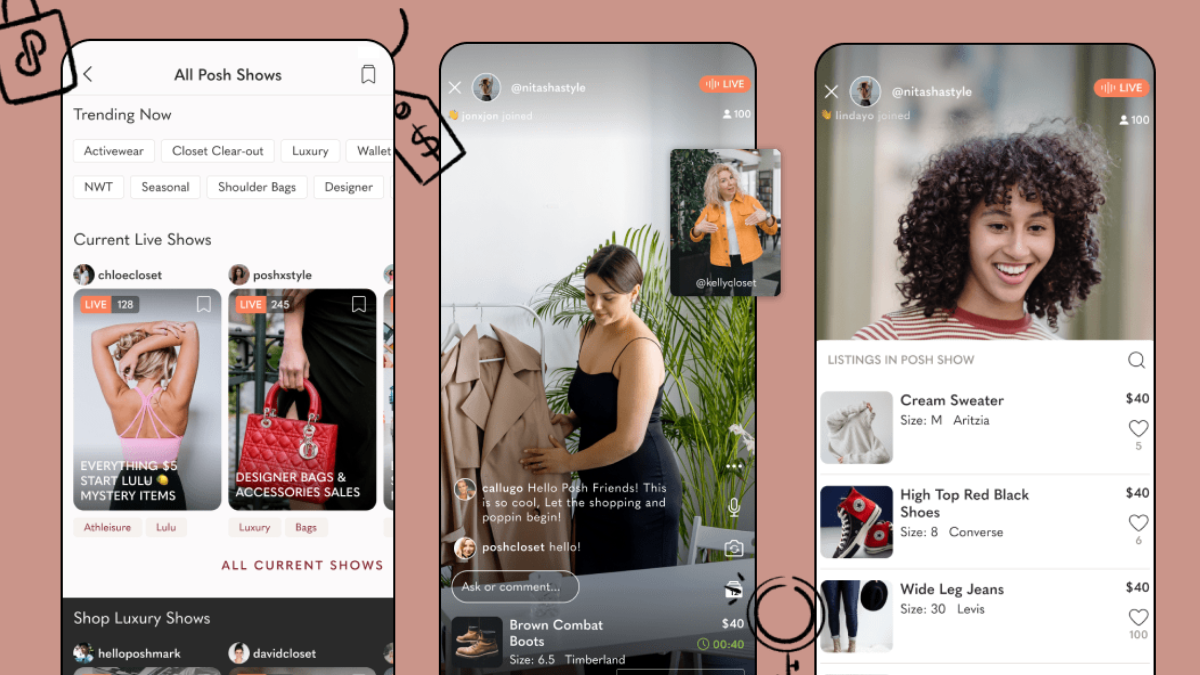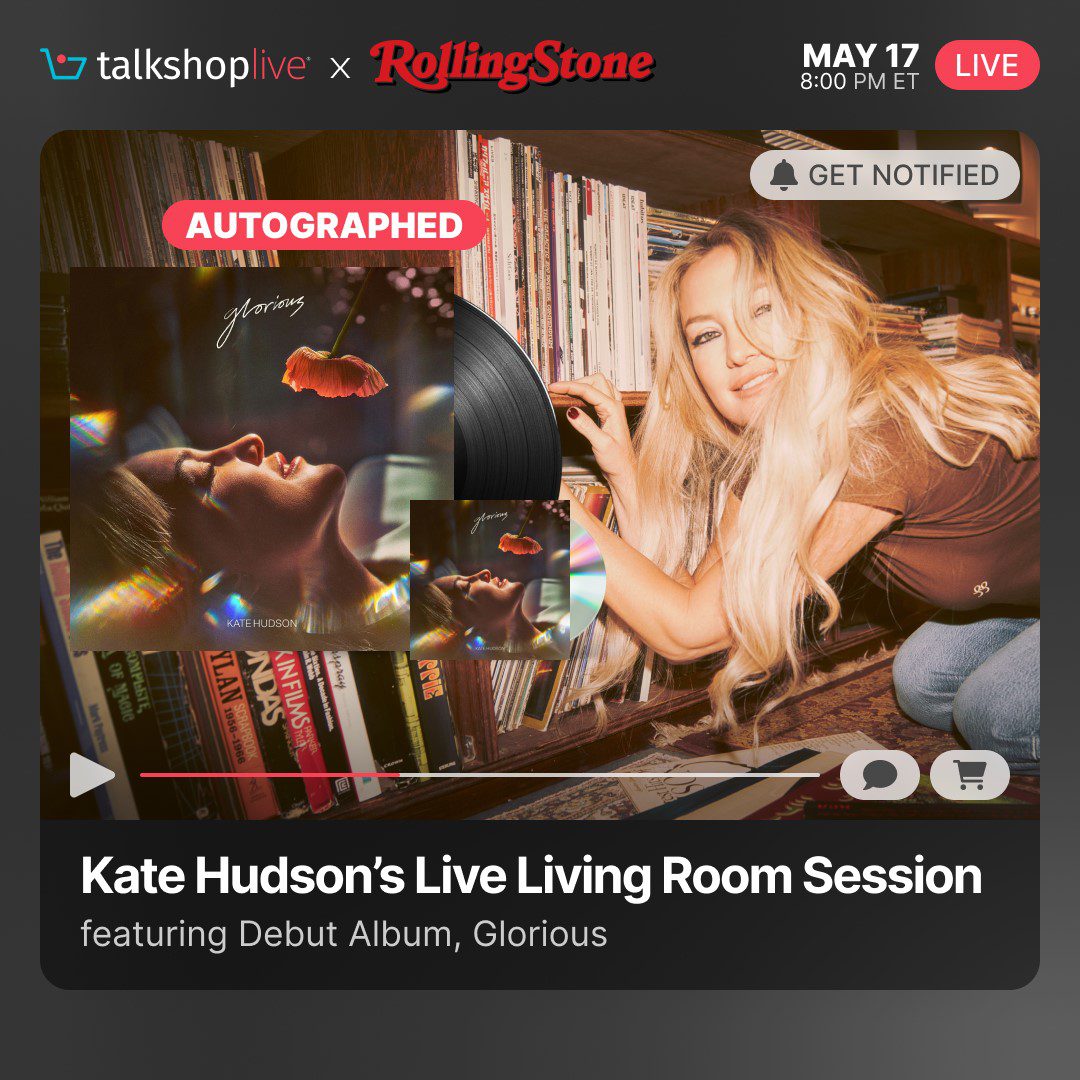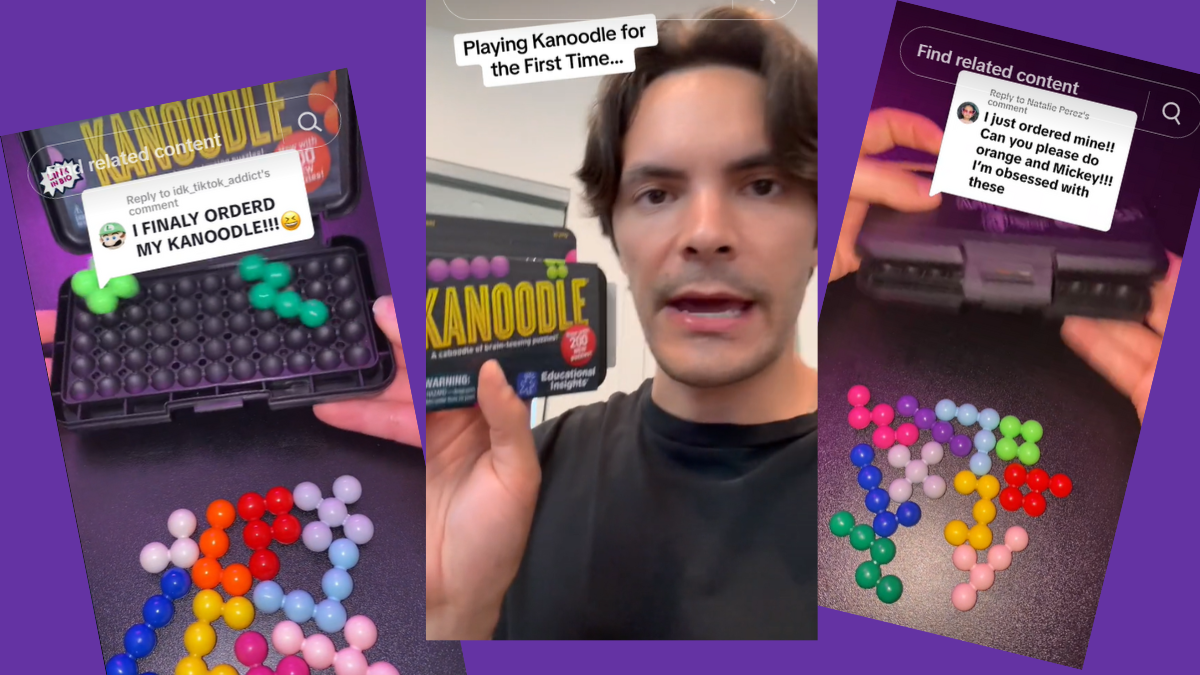How Amazon, Poshmark and Rolling Stone Use Livestreaming to Break out from the Ecommerce Grid


Today’s consumers, especially Gen Z (73%) and millennials (62%), prefer to buy from a brand that offers interactive experiences that go beyond the standard ecommerce grid. And there’s no denying that video, whether live or recorded, is proving a powerful medium to create those experiences in digital environments.
In fact, a study commissioned by real-time engagement platform Agora found that 61% of respondents under the age of 55 are interested in livestream shopping experiences, with the ability to interact with brands and sellers in real time driving that interest. While livestreaming has yet to take off in the U.S. the way it has in Asia, a number of brands are adding some spice to their content marketing mix with the integration of live shopping experiences.
“To create successful live shopping experiences, retailers must first understand their customers’ behavior, preferences and motivations,” said Joe Kwong, Head of Business Development at Agora in a statement. “Through these insights, they can enhance interactivity and curate exclusive offerings that truly resonate with customers, going beyond selling products to create immersive experiences that redefine retail as we know it.”
Shopping always has been as much about entertainment as the acquisition of goods. Here are six recent examples of how Qurate Retail, Amazon, Poshmark, Rolling Stone and others are leveraging livestreaming to bring the interactivity and fun of shopping IRL into the often homogenous land of ecommerce.
1. Qurate Retail’s New App and FAST Channel

HSN and QVC are the indisputable OGs of live shopping, and their parent company Qurate Retail Group is making a concerted effort to bring the brands’ decades of expertise into new media channels. Most recently those efforts have included a new shopping app targeted at “Gen Zennials,” and the debut of a FAST (free ad-supported television) channel on Roku.
“The digital shopping experience has become so transactional, it has lost the humanity and soul of what makes shopping so joyful,” said Brian Beitler, General Manager of Qurate’s Live Shop Ventures division in an interview with Retail TouchPoints. “Especially when you don’t have [something particular] in mind, part of the joy is being surprised and amazed by what you see in shop windows or in the aisles. But the digital experience today is point and click, hunt and search. There’s no way to just sit back and have somebody bring you amazing products and stories to discover.”
Enter Sune, which soft-launched in beta in March 2023. The goal is to make an app “where the entertainment is shopping, instead of shopping being an interruption to the entertainment,” said Beitler. The app features videos from a collection of retained influencers (called “Sune-setters” in a play on “trendsetters”), large influencers from other platforms and brand founders. It is built on a marketplace model and featured more than 400 brands as of March 2024.
But Qurate isn’t giving up on TV. The group also recently launched a new channel called The Big Dish on Roku, part of its ongoing effort to reach streaming TV audiences. Content on the channel features a mix of selling and non-selling, culinary-focused programming starring famous chefs, celebrities, kitchen gadgets, food and the latest trends in home entertainment.
Bottom Line: Livestreaming has been a tough nut to crack in the U.S., so while Qurate’s latest initiatives are still relatively new and unproven, they are worth keeping an eye on — because there is no company that better understands how to connect with Americans through live video selling.
2. Amazon’s Livestreaming Expansion into TV
Another brand doubling down on TV is Amazon, which launched its ad-supported Prime Video tier earlier this year and already is leveraging those new ad spaces as selling zones that link to its ecommerce marketplace.
But that’s not all, folks. In 2016, Amazon dove into the livestreaming waters with the debut of Amazon Live on the Amazon website, app and its Fire TV devices. Now, Amazon is looking to expand the reach of that live shopping content with the debut of a new interactive shoppable channel on its Prime Video and Freevee streaming TV services.

The HSN-style FAST channel will give consumers expanded access to the content and creators of Amazon Live. It also features Amazon’s “Shop the Show” technology, through which customers can browse, shop and engage with the content on their TV screen via their mobile device. Customers watching the new FAST channel on their TV can open the Amazon Shopping app on their phone and type “shop the show” into the search bar to be directed to a shopping carousel highlighting the featured products they see on TV in real time.
In 2023, more than 1 billion customers in the U.S. and India watched Amazon Live streams, according to Amazon. Now with its new FAST channel, Amazon is aiming to blend the experience of a shoppable social feed with streaming TV via 24/7 programming. In addition to featuring existing content and creators from Amazon Live, the channel also will showcase new made-for-TV content, including a new original show with Paige DeSorbo launching this June.
“With the new Amazon Live FAST Channel on Prime Video and Freevee, we’re making shoppable entertainment more accessible, interactive and engaging than ever before,” explained Wayne Purboo, VP of Amazon Shopping Videos in a statement.
Bottom Line: This move represents an interesting return to a more traditional format for home shopping — one that had been eschewed by many companies in recent years in favor of newer video platforms, in particular social media. However, Amazon’s shift from a social media-style setting back into television is a sign of the preferences of U.S. consumers, who have always liked live video shopping via their televisions — and as such, are less likely than their Asian counterparts to want to do it at length on mobile devices and social platforms.
3. Poshmark’s Community-Building Plug-and-Play Live Shows

In 2023, fashion resale marketplace Poshmark debuted Posh Shows, which enable sellers on the peer-to-peer platform to host their own livestreams. Posh Shows are designed as fast-paced auctions, where hosts set the starting price and duration of the livestream, allowing them to quickly move through inventory.
Shoppers engage in a dynamic, entertaining shopping experience, discovering products, communicating with other buyers and the seller and scoring deals. Hosts also can collaborate with other Poshmark sellers through the Sell Together tool, which lets hosts auction items from other sellers’ closets, populating their Posh Show with fresh inventory while helping others make sales.
“With Posh Shows, we are reinventing fashion resale for the next decade,” said Manish Chandra, Founder and CEO of Poshmark in a statement. “Poshmark was designed from day one to create a shopping experience built around community and real-time social interactions, making it the ideal destination for live commerce.”
“We saw a huge gap in live commerce in the U.S. — the need for a platform that could help anyone be successful with live selling by making it incredibly simple and fun,” added Tracy Sun, Co-founder and SVP of Seller Experience at Poshmark in a statement.
This year, Poshmark took it to the next level, with a month-long program of live shopping events in celebration of Earth Month that included brands such as Rothy’s, Pact, Wolven and Cleobella. Brand partners for the series hosted Posh Shows that enabled them to not only connect directly with fans but also support secondhand sellers of their products.
Bottom Line: The selling and buying community on peer-to-peer platforms like Poshmark can often be large and disparate, but Poshmark is showing how livestreaming can bring users together by allowing them to interact in real time. Beyond the benefit of making sales, these kinds of virtual events create a community not just around the host but around the platform that hosts them — not to mention that live selling can be a huge unlock in a category like resale, where the goods are singular and therefore the process to list products comes with a lot of friction.
4. Rolling Stone’s Shoppable Livestream Concert with Kate Hudson
Most of us know Kate Hudson as an actress and/or the offspring of actors, but she is also apparently a musician and has been writing music her whole life. To celebrate the release of her debut album Glorious on May 17, music magazine Rolling Stone will host a live “living room concert” and interview with Hudson via TalkShopLive, during which viewers will be able to buy autographed CD and vinyl versions of the album as well as themed merchandise.

The event will be broadcast on Hudson’s Instagram feed, Facebook page, RollingStone.com and TalkShop.Live using TalkShopLive’s Shoppable Simulcast integration, which will allow viewers to watch and shop on their platform of choice without leaving the stream. Hudson’s Instagram and Facebook followers will receive a notification of the stream when it’s live, and viewers who comment “BUY” on the show will receive a DM or Facebook message with direct links to purchase products.
“We’ve built our platform for media moments just like this, where consumers can engage in premium video content accompanied with a frictionless shopping experience,” said TalkShopLive Co-founder and CEO Bryan Moore in a statement.
Bottom Line: In addition to highlighting the cross-channel capability of new livestreaming technologies, the event also showcases how non-retail brands can leverage their existing content and events to enter the world of commerce via livestreaming.
5. TikTok and Shein’s Adaptation for U.S. Audiences

Whether you think TikTok poses a national security risk or not, there’s no denying that it has completely shifted the way younger generations engage on social media, proving beyond a doubt that young consumers have a near-universal preference for content in video form.
With the debut of TikTok Shop in September 2023, TikTok took its already successful video-based content and made it shoppable, a notable difference from the shoehorning other less video-heavy social media sites have had to do to work livestreaming into the mix.
TikTok Shop was a near-instant success, with many sellers reporting impressive sales during the 2023 holiday period and even before. However, that success came at a cost to TikTok, which is estimated to have lost more than $500 million on its Shop endeavor in the U.S. in 2023 as it looked to incentivize participation, according to The Information
To help make the endeavor financially viable, earlier this year TikTok began testing a new feature that could make all video posts on the social media platform shoppable. The AI technology automatically identifies objects in video content and then links to similar products available in TikTok Shop. That’s as opposed to the current set-up, which allows only creators with sizable followings or brands that have set up a TikTok Shop to create shoppable posts.
Making more content on the site shoppable would clearly help the offering’s profitability. In fact, multiple sources have reported that TikTok is aiming to sell $17.5 billion worth of goods in the U.S. this year, a 10X increase from 2023.
And to further support its content and commerce efforts, TikTok also is reportedly planning to open studio locations in several U.S. cities, beginning with Los Angeles. Each location would feature multiple studios that could accommodate dozens of creators per day shooting livestreamed and promotional content. The model is one already used by short-video app Douyin, which is also owned by TikTok parent company ByteDance, in China.
In addition to giving creators a more professional setting for filming, manufacturers also would be able to send products to the TikTok studios so creators could promote them. While the project will begin in LA, the long-term goal is to open multiple facilities; of course, those plans may have shifted with the passage of the new sell-or-be-banned law, which TikTok is now fighting in court.
Another Chinese-based brand making inroads in America, Shein, also is looking for ways to bring the livestreaming success of its home country to the U.S. The fashion app has begun regularly hosting livestreams to roll out its seasonal product releases.
Bottom Line: When it comes to livestreaming, China has led the charge for years, so it would be a mistake not to look at how Chinese-based companies like TikTok and Shein are bringing the format into U.S. homes.











